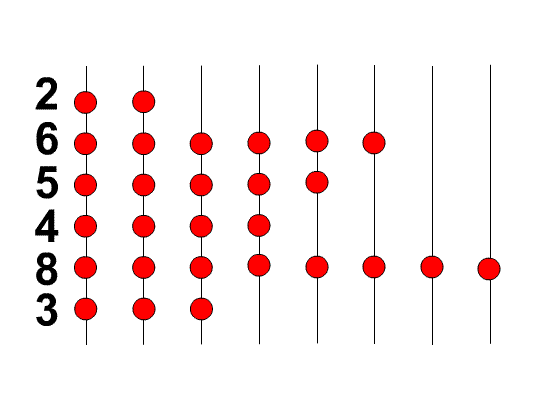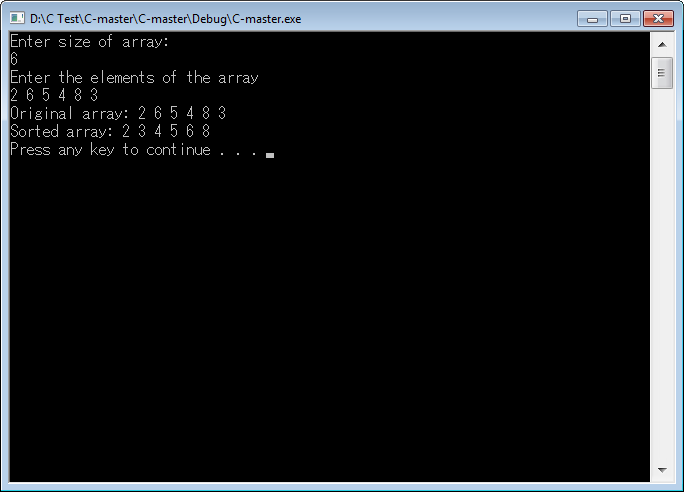排序之珠排序
先看一段动态图:

未排序前: 2 6 5 4 8 3
排序后: 2 3 4 5 6 8
步骤:
1. 每个数都分为几个1,然后在一个两维数组(待排序数组长度,数组中数的最大值)中制作珠子
2.珠子掉落
3.从上到下依次遍历,确定升序序列
代码如下:
#include <stdio.h>
#include <stdlib.h>
/**
* @addtogroup sorting Sorting algorithms
* @{
*/
/** Create easy access of elements from a 2D matrix stored in memory as a 1D
* array
*/
#define BEAD(i, j) beads[i * max + j]
/**
* Displays the array, passed to this method
* @param [in] arr array to display
* @param [in] n number of elements in the array
*/
void display(const int *arr, int n)
{
int i = 0;
for (; i < n; i++)
{
printf("%d ", arr[i]);
}
printf("\n");
}
/** This is where the sorting of the array takes place
* @param [in,out] a array to be sorted
* @param [in] len Array Size
*/
void bead_sort(int *a, size_t len)
{
int i, j, max, sum;
unsigned char *beads;
for (i = 1, max = a[0]; i < len; i++)
if (a[i] > max)
max = a[i];
beads = calloc(1, max * len);
/* mark the beads */
for (i = 0; i < len; i++)
for (j = 0; j < a[i]; j++)
BEAD(i, j) = 1;
for (j = 0; j < max; j++)
{
/* count how many beads are on each post */
for (sum = i = 0; i < len; i++)
{
sum += BEAD(i, j);
BEAD(i, j) = 0;
}
/* mark bottom sum beads */
for (i = len - sum; i < len; i++)
BEAD(i, j) = 1;
}
for (i = 0; i < len; i++)
{
for (j = 0; j < max && BEAD(i, j); j++)
;
a[i] = j;
}
free(beads);
}
/** @} */
/** Main function */
int main(int argc, const char *argv[])
{
int n = 0;
int i = 0;
int *arr = NULL;
printf("Enter size of array:\n");
scanf("%d", &n); // E.g. 8 1 2 3
printf("Enter the elements of the array\n");
arr = (int *)malloc(n * sizeof(int));
for (; i < n; i++)
{
scanf("%d", &arr[i]);
}
printf("Original array: ");
display(arr, n);
bead_sort(arr, n);
printf("Sorted array: ");
display(arr, n);
free(arr);
system("pause");
return 0;
}
运行结果:




 浙公网安备 33010602011771号
浙公网安备 33010602011771号